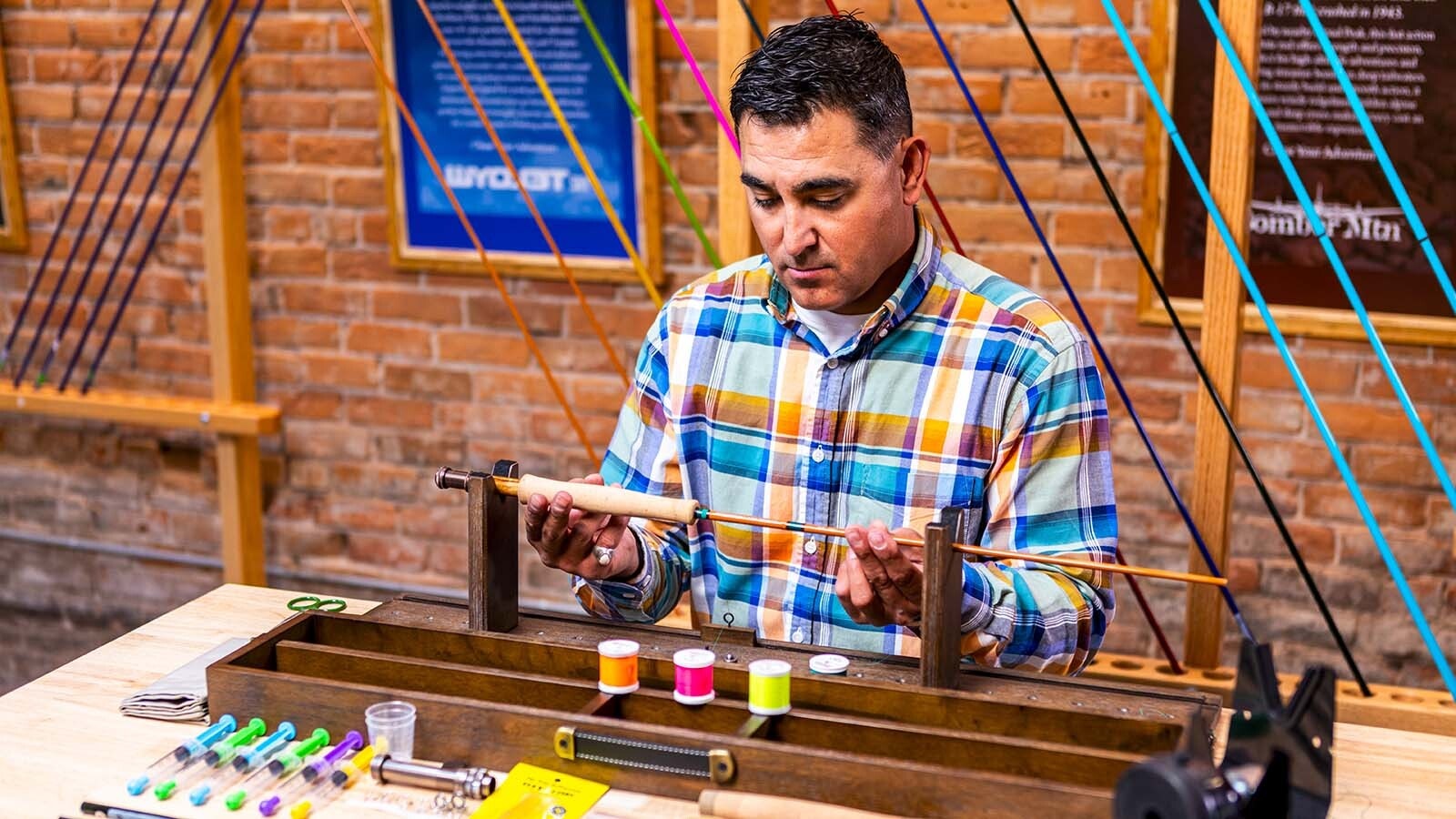With 2024, you’d think Pinedale, Wyoming, photographer Dave Bell wouldn’t go out of his way for another photo session on New Year’s Eve. When he heard that another coronal mass ejection (CME) from the sun was heading for Earth, he bundled up and set out to see the last aurora of 2024.
Bell set up his camera in a parking area overlooking Fremont, where he could get the mountains in the same frame as the aurora. When he arrived around 10 p.m., he could already see Christmas colors in the sky.
“I could see the reds and greens and the pillars with my naked eye, but the colors were very faint,” he told Cowboy State Daily. “The only problem was it was about 12 below zero. So, I left my Jeep running, went outside to shoot for a little bit, then got back in the car to warm up and make sure my batteries weren’t dead.”
The aurora reached its climax around 11 and was over in less than 15 minutes. Bell got some high-quality images of the last aurora of 2024, but ranked it somewhat underwhelming after what he and many other Wyomingites have experienced this year.
“I called it a 6.5, mainly because of the short length,” he said. “The aurora I photographed in October was a 10, which set a high bar for us in Wyoming. The sun is extremely active right now, but I don't know if we'll see one like that again.”
A Year In Review
Last year was undoubtedly an excellent year for auroras in Wyoming and worldwide. The cause was the climax of the sun’s 11-year solar cycle.
“We passed the sun’s solar maximum in October,” said Jan Curtis, a retired meteorologist and climatologist who was the Wyoming State climatologist from 2001 to 2005. “We get a lot more CMEs generated from the sun in the years around the solar maximum, so the sun was very active in 2024.”
Curtis explained that the sun goes through 11-year and 22-year cycles. The extremes of these cycles are the solar maximum and minimum, which determine the number of sunspots on the star’s fiery surface.
“The sun’s cycles are caused by its reversing polarity,” he said. “The first 11 years is a positive polarity, meaning sunspots dominate a certain hemisphere more than the other. And then, the polarity of the Sun switches for the next 11 years, causing negative magnetic effects.”
The four years around the solar maximum and minimum are when the sun is most and least active, respectively. In the 22 years it takes for the sun to go through a complete cycle, Curtis said 2024 has been the best year for aurora since 2003.
“Everybody talks about the 11-year sunspot cycle, but it's technically a 22-year cycle,” he said. “Since we just passed solar maximum, we’re going to see a lot more of these solar storms in the next two years.”
Eyeing The Equinoxes
The incredible aurora Bell photographed in October might be the best Wyoming gets, but there could also be bigger and better auroras in the coming year.
Curtis anticipates 2025 could be an even better year for auroras than 2024. One of the most encouraging signs was the New Year’s Eve display, since that’s something of an anomaly given how the sun’s energy interacts with the Earth’s atmosphere.
“Auroras are the result of geomagnetic disturbances in the atmosphere from CMEs,” he said. “The best time to see the northern lights is actually during the equinoxes in March and September because of the alignment of the sun and the Earth.”
Curtis said Wyoming was “very fortunate” to see anything so close to the winter solstice since the alignment isn’t conducive to generating auroras, especially so far south from the North Pole. That’s a testament to the strength and frequency of the CMEs being generated from the sun.
“When you get an aurora that intense at this time of year, that should mean the equinoxes will probably even be more active,” he said. “We were very fortunate to get such an active display during a solstice.”

At A Moment’s Notice
Bell is no slouch when it comes to capturing auroras. He regularly checks several apps and websites to get as much advance notice as possible of an incoming CME.
“I have three or four that I use,” he said. “Some will say there's going to be a show, and some say there's not. I took a gamble on New Year's Eve, and it paid off.”
Auroras can last from a few minutes to several hours. The intensity depends on many factors, including the strength of the CME and one’s distance from the North Pole.
Bell isn’t a scientific expert on CMEs nor how they’ll manifest as auroras. Because of this, he takes every chance he gets to capture auroras and has handy tips for amateur and professional photographers who’d like to do the same.
“I use two F.12 lenses — a 50 mm and a 35 mm — for auroras,” he said. “They’re both extremely fast, so I take 20-second shots with a 1250 ISO and 1.2 aperture. That aids in collecting light without keeping your shutter open so long, so you have less star tracking in the shot.”
Curtis reassured Bell and other Wyoming photographers that they should have plenty of opportunities to get stunning aurora shots this year. There’s no way of knowing when, where and how many, but the best auroras of the last two decades could still be on the calendar in 2025.
“I would say we’ll get at least another handful of auroras over the next few years, and possibly many more, where people at the mid-latitudes will get to see them easily,” he said. “The sun is still very active right now, and it’ll keep generating strong CMEs throughout the year.”
Andrew Rossi can be reached at arossi@cowboystatedaily.com.





